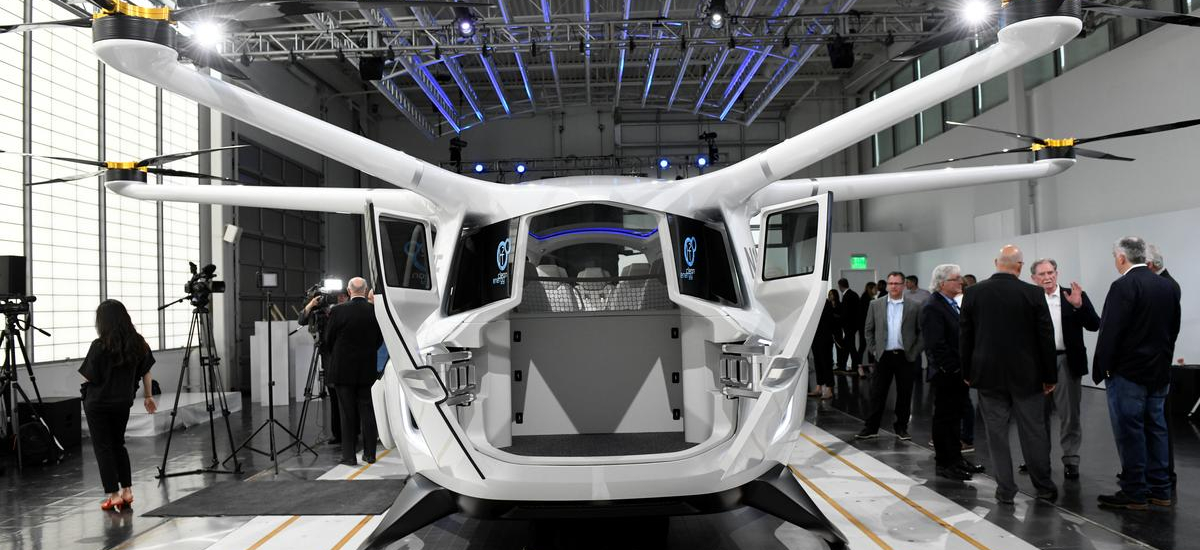
 Your Credit Estimate
Your Credit Estimate
 Your Credit
Your Credit
Your zip code helps us provide you with the most accurate vehicle pricing and vehicle availability.
We estimate your credit score to give you an idea of your monthly payments. To get an accurate payment amount, complete our credit application by clicking the Start Credit Application button below.
start credit application
Forget about the autonomous car race, although still going strong with automakers and tech giants from all around working on their own, like Fiat Chrysler Automobiles (FCA) turning the Chelsea Proving Grounds into an autonomous vehicle testing facility and Apple producing their own self-driving vehicle, the Titan. At NowCar, we’re always interested in auto technology, and that means everything like alternative fuel to flying cars is on our list of things to write about. Coincidentally, we’re going to talk about both today. If readers thought the hydrogen-powered fuel cell vehicles by Kia and Hyundai are crazy, check out the “Skai”, a hydrogen-powered personal aircraft.
Flying Cars Are Popping Up
Skai isn’t the first personal aircraft to get attention. Remember the Blackfly personal aircraft? It was accompanied by Airbus and other ride-hailing aircraft programs at the 2018 Geneva International Motor Show. Out of all the concepts there, the Blackfly was the most confident design, with already having flown over 10,000 miles over 1000 tests. Marcus Leng, founder of the backing company of the Blackfly, Opener, claimed the Blackfly would be available somewhere between 2019-2020…it’s mid-2019 and nothing so far.
On Wednesday, May 29, 2019, in Southern California, a full-scale model of Skai was put on exhibit for investors, the news media and other invited guests outside the BMW Group’s Designworks studio in Newbury Park, a suburb north of Los Angeles. Although engineering and avionics for the personal aircraft were developed by Alaka’i Technologies, a privately held company based in Massachusetts, an unnamed BMW unit contributed to the craft’s overall design. Perhaps the BMW X5, able to seat five passengers, based on the mock-up displayed on Wednesday – it was about the size of a minivan but also resembled a sleek, five-seat SUV.
Accompanying the BMW unit were landing skids and an array of six horizontal rotors attached at the end of arms protruding from the roof of the aircraft, but no demonstrations of Skai were given. The model on display was actually a non-functional replica of the company’s only full-size operational prototype and is expected to begin remote-controlled test flights soon at the firm’s Massachusetts lab. Awaiting Federal Aviation Administration certification, Alaka’i Chief Executive Officer Steve Hanvey expects to win FAA certification for initial production of Skai by the end of 2020 and make it available for retail by 2021, projecting production of more than 10,000 vehicles a year, with a starting MSRP similar to that of a luxury car.
Here’s the crazy thing - powered by six hydrogen fuel cell batteries (one for each rotor engine) - the aircraft is designed for a flying range of 300 miles. That’s a whole lot further one can fly when compared to the Blackfly’s quoted range of only 25 miles, and a single-person aircraft at that. We’re not saying Blackfly is in the wrong by making a personal aerial vehicle for just one person isn’t smart – how many people today drive a four-door car but are always alone? How many people really want to put their lives in the hands of a questionably experienced pilot?
Blackfly is powered by an 8 kWh battery, is able to reach a speed of 62 mph, and is easy to operate, controlled by a simple joystick like that in an aircraft simulator. Although FAA rules will require the Skai aircraft to have pilot operation, developers expect the vehicle will eventually be flown by autonomous, pre-programmed guidance systems. It could even be a ride-hailing service like Airbus. Car broke down in the middle of traffic? Let road assistance know they have a towing job and then fly to work via a public transport aircraft.
We’ll be waiting for those flying aircrafts “by 2021”. Until then, stay up-to-date with all the cool car technology when you follow NowCar on social media.